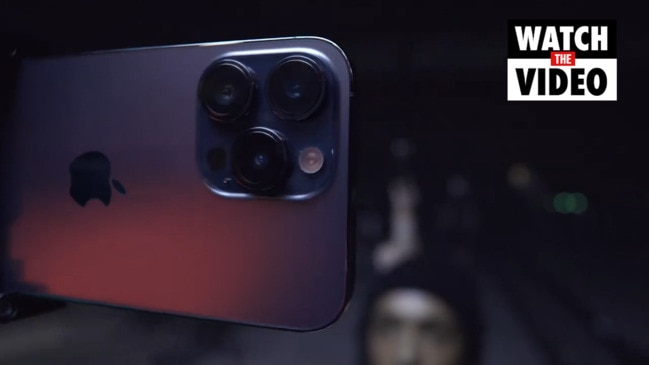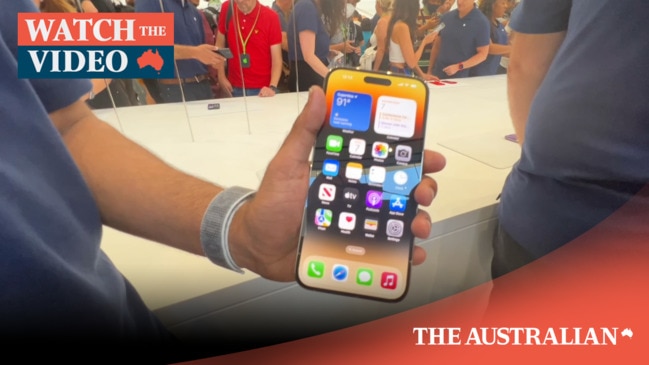How the iPhone 14, 14 Plus and 14 Pro Compare to Apple’s iPhone 13 line-up
The value of Apple’s iPhone 14 will vary depending on how much you use advanced smartphone features.

The value of Apple’s iPhone 14 will vary depending on how much you use advanced smartphone features.
At first glance, this year’s handsets look striking like last year’s.
There is more consistency in Apple’s product range of two sizes; each size is available with standard or premium features.
The standard iPhone 14 starts at $1399, the larger standard iPhone 14 Plus from $1579. The 6.1-inch Pro model costs from $1749 while the large Pro Max begins at $1899.
Prices have increased since last year ($170 for the basic iPhone) but you are getting more bang for your buck. But the iPhone remains pricey. The cheapest new iPhone in Australian remains the iPhone SE at $719, but that’s with a paltry 64GB of storage and a thick bezel around the screen.
There are some cosmetic changes with iPhone 14; the black section housing the front-facing camera assembly – the so-called notch – now resembles a smaller vitamin capsule on Pro Max models.

For me, this doesn’t rate on the Richter scale of importance, but it does to Apple devotes polled on the matter.
The Pro handsets are a tad thicker and the back camera bump a smidgen deeper, which may impact some users using iPhones with tight-fitting cases and assemblies.
The most noticeable other difference is the always-on display on the Pro and Pro Max models. The phone still manages to show some basic information when it is idle and the screen locked.
Apple manages this by drastically dialling down the screen refresh rate to almost nothing and saving copious amounts of power.
However, Android has offered always-on displays for years, and they are not confined to high-end models. Still better late than never.
At launch, you see the date, time, remaining battery and rings among the metrics displayed with always-on, but one would imagine that eventually you can choose this information.
This year the colour ranges are different with standard handsets available in blue, purple, midnight, starlight and product red.

Pro handsets come in gold, silver, space black and deep purple.
Apple’s announcement of a “dynamic island” on Pro models is a more upmarket form of notification. For example, a notification about a music track playing might include controls to play, pause and stop it.
The Pro model screens are capable of an impressive 1600 nits brightness.
However, you don’t get to experience the more powerful features of iPhone 14 by looking at it in the first five minutes of use, such as the satellite connectivity. Once available, you’ll be able to text emergency services for help if you are lost or injured in remote areas without cellular connections.
Likewise, reviewers aren’t going to experience the iPhone’s crash detection capability (hopefully). The company says the phones detect severe front impact, side impact, rear end collisions and rollovers.
The biggest advances remain photography. There’s the new 48MP wide lens on Pro models for sure, but Apple also announced a slew of new photography capabilities around sharper images, better colours, realism, and low light performance.

The new wide lens on Pro models also offers 8K video recording, but will you really need it? If not, you’ll be using up disk storage space unnecessarily.
So where does Apple go from here? A periscope zoom that shunts light up and down inside the iPhone to enlarge images is an obvious feature to develop.
Smartphones generally have trouble with zoom photography due to their size, and Apple has been conservative, offering just 3x optical zoom.
Compatibility with LE Audio which makes audio streaming possible over Bluetooth Low Energy is another initiative that surely is in the wings with Apple staff reportedly helping with its development.
However, satellite communications is an important development, not just because Apple is doing it, but because we will see some general integration involving satellite and terrestrial communications in the near future.
Chris Griffith travelled to California as a guest of Apple.





To join the conversation, please log in. Don't have an account? Register
Join the conversation, you are commenting as Logout